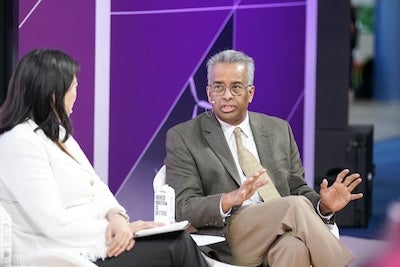Leaders, faculty and fellows from Rice University spoke at CERAWeek March 18-22 to share their expertise or research on a myriad of topics relating to the energy transition. In line with Rice’s multidisciplinary culture, the experts represented the fields of materials science, nanoengineering, electrochemical sciences, social sciences, innovation and geopolitics.
The energy transition will only be possible with a materials transition, and carbon plays a big role in this, according to Matteo Pasquali, the A.J. Hartsook Professor of Chemical and Biomolecular Engineering, professor of chemistry and materials science and nanoengineering and director of Rice’s Carbon Hub.
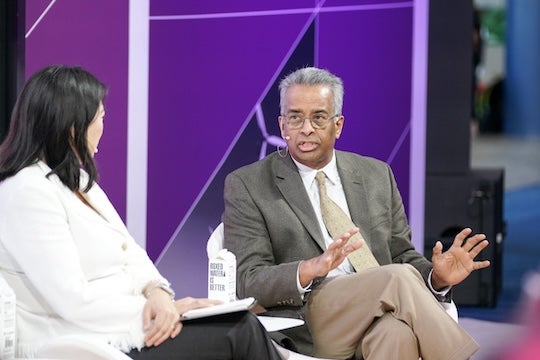
The vision of the Carbon Hub is a zero emissions future, where clean hydrogen energy and advanced carbon materials are co-produced efficiently and sustainably from natural gas and oil. Fossil hydrocarbons would no longer be burned for energy and large-scale technology would be deployed to provide industrial carbon materials that house, move, clothe and feed people.
On one panel, Pasquali argued that “disruption” is when you can serve the same function in a completely different way that affects people on a large scale. Moving disruptive technology from the experimental stage to the commercial stage takes cooperation from government and industry resources.
“It takes capital deployment in a scale that’s meaningful, but it’s not so huge that you cannot learn,” he said. “And at the same time, you also have to be able to translate what you learn in that meaningful stage.”
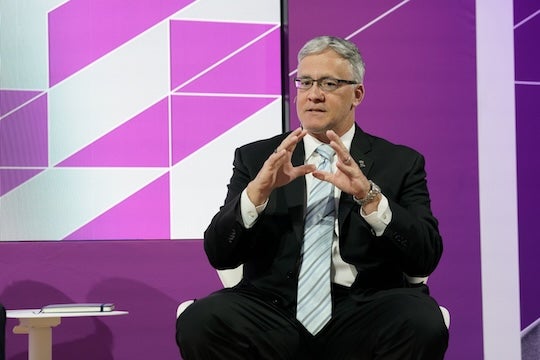
Time by itself doesn’t make tech cheaper — it will require an effective system, Pasquali said.
Ramamoorthy Ramesh, executive vice president of research and professor of materials science, nanoengineering, physics and astronomy, discussed his involvement in the Department of Energy’s SunShot Initiative and the future of energy. For the SunShot Initiative, Ramesh worked under former energy secretary and Nobel laureate Steven Chu to lead a $300 million-a-year effort aimed at bringing the cost of solar electricity down to grid parity without the assistance of federal or state subsidies.
He agrees that a systems perspective is ideal and requires innovation and innovative people, but that innovation must be fed.
“Of course, that looks very parochial coming from a university, but the reality is if you want to go from $5 a kilogram of hydrogen or $500 per ton of CO2 down by a factor of five, that’s pretty intense,” Ramesh said.
In his role at Rice, Ramesh oversees the institution’s internal and external research ventures and partners with deans, faculty and staff to bolster the university’s research infrastructure and propel productivity to new heights.
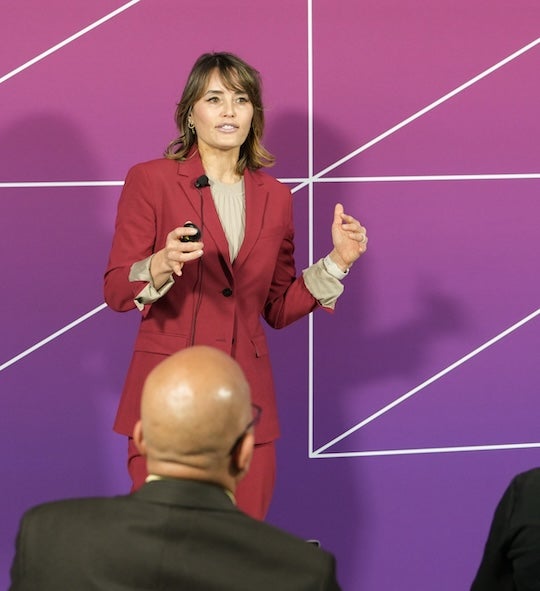
Ramesh stressed the need to address barriers to market adoption such as cost, infrastructure and demand. He argued that the private sector has a huge role in creating efficiencies, but that includes the government and universities and investing in the people who come out of those universities.
Building “Hydrogen City” in Texas was the topic of the panel featuring Ken Medlock, the James A. Baker, III, and Susan G. Baker Fellow in Energy and Resource Economics at Rice’s Baker Institute for Public Policy and senior director of the institute’s Center for Energy Studies.
Texas has a comparative advantage and is poised to lead the hydrogen energy economy, Medlock said. The state’s existing infrastructure will help manage the economic hurdles and promote affordability. He explained that hydrogen has a lot of promise because it’s diverse and can be produced in a number of different ways.
“If the hydrogen business is going to be successful, it’s going to happen here first,” Medlock said.
“We need policy and litigation to help it grow, not hinder it,” he continued. “We need a systems level approach to how the market develops.”
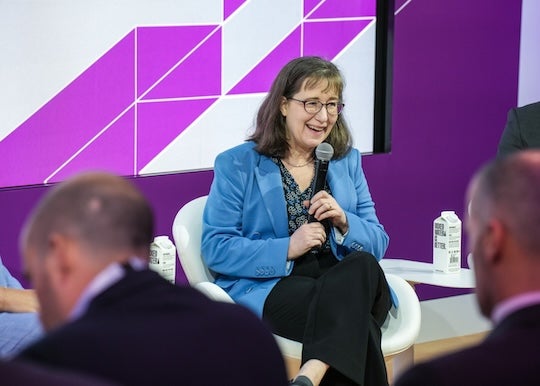
A materials and energy transition will only be successful with a circular economy, said Rachel Meidl, fellow in energy and sustainability at the Baker Institute, who presented her research on sustainability from a systems perspective. Infrastructure is key to any energy future, she said.
Meidl explained how both energy transitions and the idea of sustainability are multidimensional, and there are three pillars at the heart of it: society, environment and the economy.
“Think of it as each pillar representing a stool,” Meidl said. “We have the commercial/financial, which is the economics, we have the environment, we have society, the socio-economic. And all of that is buttressed by market design, by innovation and supportive policies. All of that supports sustainable development.
“If you have an overemphasis on, say, the environment leg of the stool and not enough focus on the economics with the commercial/financial and you’re ignoring things like social equity and the human dimension, this stool will become unstable, and then it’s going to collapse.”
Carrie Masiello, the W. Maurice Ewing Professor, professor of Earth, environmental and planetary sciences and director of Rice’s Sustainability Institute, took part in a conversation centered on the importance of designing carbon offset programs that prioritize community benefits and avoid “greenwashing.”
Masiello spoke about the democratization of carbon credits and the importance of creating benefits for people, not just companies. The more people who are able to participate in and benefit from carbon credit generation, the faster the market will grow.
“One of the things that we need to be thinking about as we want to get CO2 out of the atmosphere rapidly is how to engage as many people as possible as fast as possible,” Masiello said. “That’s what we’re talking about when we’re talking about democratizing the current market. How do we create vehicles for moderate income people across the world to generate carbon credits and to be able to sell them in such a way that they participate in this generation?”
To learn more about the multidisciplinary work of Rice’s energy experts, visit Rice News.

